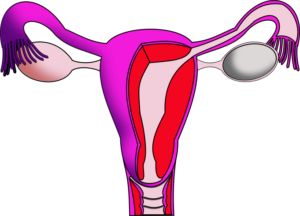Various problems can arise when a couple is planning to have a child. In addition to all the external challenges that must be overcome, many couples may also face infertility. It is estimated that about 15% of couples in Brazil suffer from this type of problem, and it is often necessary to consult a human reproduction specialist to undergo the appropriate treatment, when possible. And one of the main causes of infertility in women is uterine synechiae. But what does this actually mean? What are the causes? Is there a treatment? We will discuss all these aspects in today’s text.
What Are Uterine Synechiae?
We can define uterine synechia as an adhesion that forms in a woman’s uterus, similar to a scar. There are three stages in which this type of adhesion can be found. They are:
- Mild
- Moderate
- Severe
In the mild stage, adhesions contain endometrial tissue, either totally or partially. In the moderate stage, the adhesions also have fibromuscular tissue covered by endometrium, which can cause partial or total damage to the uterine cavity. In the severe stage, the disease presents as dense tissue that causes greater damage to the uterine cavity. Although there is a certain myth surrounding uterine synechiae, it is important to remember that a woman who has uterine synechiae is not necessarily infertile, but it is of course necessary to be cautious, as the risk exists.
Main Symptoms of Uterine Synechiae
One of the biggest challenges for a woman discovering this condition is that uterine synechiae are asymptomatic, meaning they do not cause any noticeable changes to make a woman suspect there is a problem. However, there are some small signs that may indicate something is wrong with the uterus. Some of these are:
- Problems with menstrual flow such as amenorrhea, dysmenorrhea, and hypomenorrhea;
- Infertility;
- Miscarriages;
- Pregnancy complications.
Often, it is one of these signs that leads a woman to discover she has this condition. If a pregnant woman is diagnosed with uterine synechiae, she has a high-risk pregnancy and needs special care to avoid further complications during pregnancy.
What Are the Causes?
The cause of uterine synechia appearing in a woman is due to some internal injury the uterus has suffered. From this point, we can speculate various reasons for the uterus having been affected, such as:
- Cesarean surgery
- Myoma removal
- Uterine infections
- Curettage
- Intrauterine surgeries
- Radiotherapy
- Endometritis
As you can see, there are many factors that can cause uterine synechiae in a woman. For this reason, it is always important to be alert to complications that certain types of surgeries or treatments can bring and to always keep exams up-to-date so that problems like uterine synechiae do not cause negative consequences.
How Is Uterine Synechiae Diagnosed?
The diagnosis is made through a thorough investigation of a woman’s uterine cavity. These exams are usually performed after the woman has shown some sign of bodily change, such as menstrual changes or the development of some type of disease.The best way to prevent a woman from developing uterine synechiae is to take the right care, especially in the postoperative period of the uterus, because it is during this time that these adhesions can form. In addition, it is also always important to pay attention to possible signs from the body that something is not right.
Treatment of Uterine Synechiae
Depending on the severity of the disease, in other words, which stage it is in at the moment, the treatment for uterine synechiae can be performed in a simpler or more complex way.
Simple Treatment
This is done when the adhesions in the uterus do not have very thick tissue and can be treated with non-surgical hysteroscopies. This procedure does not demand much from the woman and can yield good results over time, causing the adhesions to decrease or even disappear. If this type of treatment is not effective, complex treatment will be necessary.
Complex Treatment
When the adhesions are more resistant or with thicker tissue, surgical intervention is often needed. The surgery is considered quick and simple, with the woman potentially discharged on the same day. Depending on the severity of the disease, it may not always be possible for the woman to have a smooth pregnancy, even if that is the main goal of the treatment.
Possible Complications
When uterine synechiae are not treated or not treated properly, some complications can arise in a woman’s life. The main ones are related to infertility and miscarriages that can occur during pregnancy. Although this can be scary for many women, it is important to remember that it only occurs in more extreme cases when treatment is unsuccessful. Problems such as uterine synechiae can be worrying and may cause fear for many women. However, it is necessary to remember that it is an issue that affects many women and that there are treatments available to overcome it. No matter how frightening some problems with our bodies may seem, it is important to stay calm and think about the best way to face them so we experience as few consequences and complications as possible. Of course, it’s not an easy process and it will require some effort on your part, but with the help of those around you, you’ll realize that, like any other illness, uterine synechiae can be overcome. See Also: Uterine Height – What It Means in Pregnancy Photo: Sheldahl












